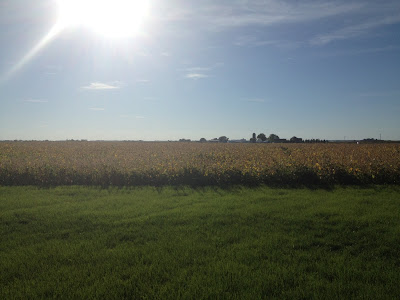I'm one of those people who enjoys watching the odometer on the car change from lots of nines to lots of zeroes, so when we decided to visit the Royal Observatory in Greenwich I knew I had an opportunity to do a little experiment. In case you didn't realize, the Prime Meridian at Greenwich was established by Sir George Airy in 1851 and recognized by most of the world in 1884 as the zero longitude line for the earth, separating the Eastern Hemisphere from the Western Hemisphere. As you can see in the photo below, the line is clearly marked on the ground and on one of the buildings of the observatory, so one can easily situate himself atop this important landmark.
I did just that with my trusty Garmin Nuvi GPS device confident I'd see so many zeroes it would make me giggle. The photo below shows the device laying on the ground directly on top of the Prime Meridian.
The device did not display as many zeroes as I expected, so I naturally asked myself, "Why?"
I knew that all GPS devices have some error, and that automotive devices like mine are not as accurate as devices that might need resolution in inches. I guessed the non-zero portion of my reading represented that error. Since I'm a curious sort, I next set about trying to calculate how much distance is equivalent to the 0.00152 degree "error" displayed by the GPS. Since the earth is not perfectly round, this calculation is not as trivial as it seems. Fortunately there are many published estimates of the equatorial radius and the polar radius of the earth, so estimating distances at Greenwich should be possible.
My first attempt assumed the radius of the earth at Greenwich was equal to the average of the polar and equatorial radii. That's a pretty rough assumption, but I was still surprised when I calculated that 0.00152 degrees was equivalent to about 105.21 meters on the ground. That's a significant error that's big enough to put someone on the wrong street if it occurred while navigating. I decided to try a different calculation.
My second attempt assumed the earth has an ellipsoid shape with the equatorial radius representing the semi-major axis, while the polar radius represented the semi-minor axis. The radius of the circle of latitude passing through Greenwich is a little smaller by this method, but the distance equivalent to 0.00152 degrees is only a few centimeters smaller at 105.17 meters. Given the agreement between these two calculations, it appears that my GPS thinks I'm 105 meters west of the prime meridian when I'm standing on the Royal Observatory's Prime Meridian.
What happens when I plug that latitude and longitude into an online map?
Bing seems to have the highest resolution image of the Royal Observatory, so this is what you'll see if you enter 51.47792, -0.00152 in the search bar for Bing Maps. (Brief tangent: Bing's image of Greenwich seems to have been taken early this summer as you can see the Olympic beach volleyball venue partially constructed in the park between the Royal Observatory and the Queen's House.)
You'll have to trust me that the dot on the image above is only a meter or two away from where I was standing when I took the photo of my Garmin. You can try the numbers in Google Maps or Mapquest, but the results should be similar to what you see above. Why do the online map services agree with my Garmin, but none of them seem to realize that the line on the ground at the Royal Observatory is the true 0.00000 longitude mark?
After reading a bit on the subject of global positioning systems and international terrestrial reference frames, I learned that even though Airy placed the line on the ground in 1851 where the current meridian is marked, by the late 1950s the Applied Physics Laboratory at Johns Hopkins University had developed the first satellite navigation system (TRANSIT) that would ultimately move the prime meridian upon which our modern navigation systems are based. Although TRANSIT was intended to agree with Airy's prime meridian, some assumptions in the definition of its location caused other landmarks around the world to be shifted relative to their location based on Airy's work. Eventually the International Reference Meridian (which was based on locations relative to TRANSIT) defined by the International Earth Rotation and Reference Systems Service came to be accepted as the prime meridian upon which our navigation systems are based, including my Garmin GPS. Where is the International Reference Meridian relative to Airy's Prime Meridian at Greenwich? About 102.5 meters east.
That seems to indicate that my GPS unit has an error of about 2 to 3 meters based on my earlier calculations. That much error seems more reasonable. I suppose one could walk 102 meters east of the meridian at the Royal Observatory until the display of a GPS unit read 0.00000, but for some reason that doesn't sound quite as charming. I probably wouldn't even giggle.

















